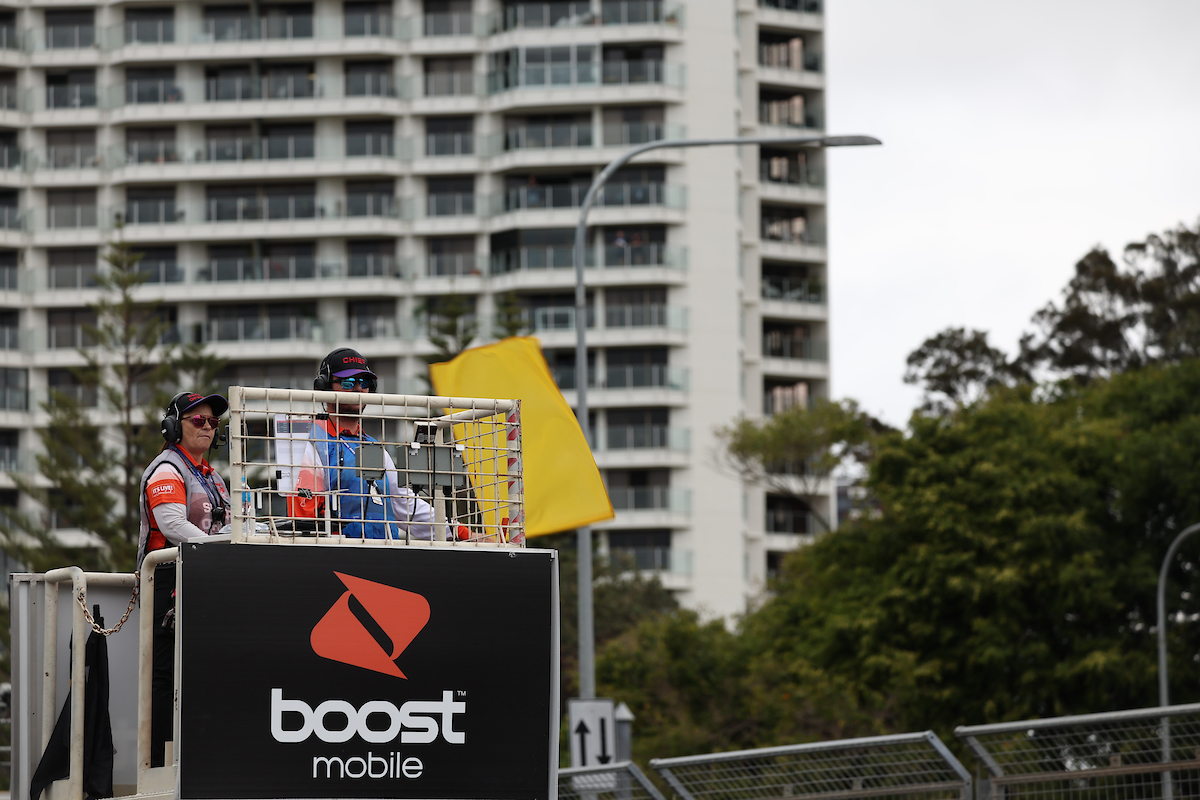

Supercars drivers involved in the Full Course Yellow trial at the Boost Mobile Gold Coast 500 have given the system their tick of approval.
Chaz Mostert, Jack Le Brocq, and Cameron Waters cut laps of the Surfers Paradise Street Circuit during an early-morning procedure test before the bulk of the field took part following Practice 2.
An initial trial at Hidden Valley ruined a practice session for Shane van Gisbergen when his Camaro became stuck on the limiter but, this time around, there were no obvious hiccups.
Both Mostert and Le Brocq suggested some tweaks could be made to the dashboard display, but were otherwise positive about the procedure.
The former remarked on the experience from within his Mobil 1 Optus Mustang, “Both sessions were exactly the same in my car, [but] I don’t know if anyone else reported that their systems weren’t working.
“It’s a very similar system to overseas.
“Obviously, I think a big yellow bar at the bottom [of the dashboard], I think we could probably make that look a little bit nicer from a spectacle point of view, if we’re using camera eyes in the helmet.
“Some of us drivers – maybe just talking about myself – fall asleep under those conditions a little bit, so [it would be helpful] if we could make the dash change in a certain point when it is going to count down from five seconds to release to show us a little bit of a different spectacle than just being under that Full Course Yellow procedure.
“[But] personally, it seems to be working.”
READ MORE: Feeney’s take on the Full Course Yellow
Le Brocq had a similar take.
“I think it was actually pretty decent,” said the Truck Assist Racing pilot.
“Across both sessions, it seemed to work pretty well. It was easy enough to turn on and off.
“Obviously, it’ll be nicer when it’s on the steering wheel eventually, when they adapt that.
“But, other than that, I think it probably served its purpose.”
The applications of the Full Course Yellow, which will also be trialled in Adelaide, are multiple.
It can be used as a way of clearing minor incidents while saving the time which a Safety Car would soak up, or as a more orderly way of bringing the field to Safety Car conditions.
In the case of the latter, the 80km/h FCY speed limit remains, except when the Race Director may allow drivers to turn it off so that they can catch the train.
As for the start of a FCY period, the trial at the Gold Coast is a 15-second countdown for drivers to reduce speed to 80km/h and activate the limiter.
Mostert believes the system is a positive move in principle, having experienced it at the 24 Hours of Spa, so long as any scope for gamesmanship under the countdown period is prevented – which would indeed be the case given how Supercars’ procedure is written.
He highlighted the plight of Le Brocq, when the Matt Stone Racing driver crashed at Albert Park earlier this year, as an example of what it is supposed to stamp out.
“I think [it is a good idea],” he said when asked about the merit of the FCY by Speedcafe.
“If we go back to the start of the year at Grand Prix, we’ve got cars passing car in the fence at 200km/h.
“So, it’s all about being safer, and I feel like other categories around the world have already implemented that.
“I came from the Spa 24 Hour, with a very similar system there for day and night, and it was flawless except there were probably a little bit less clear rules on the what that 15 seconds of racing does.
“There was a massive crash at Spa, but it was because one driver was trying to take advantage of the 15-second countdown to pass another car.
“So, as long as there’s clarity around that and what we’re supposed to do when a Full Course Yellow comes up, we’ll all learn to get around it.
“But, it’s obviously for a safety thing. We don’t want to be doing what we did at Grand Prix because, one little slip-up, and we might not all be here.”





















